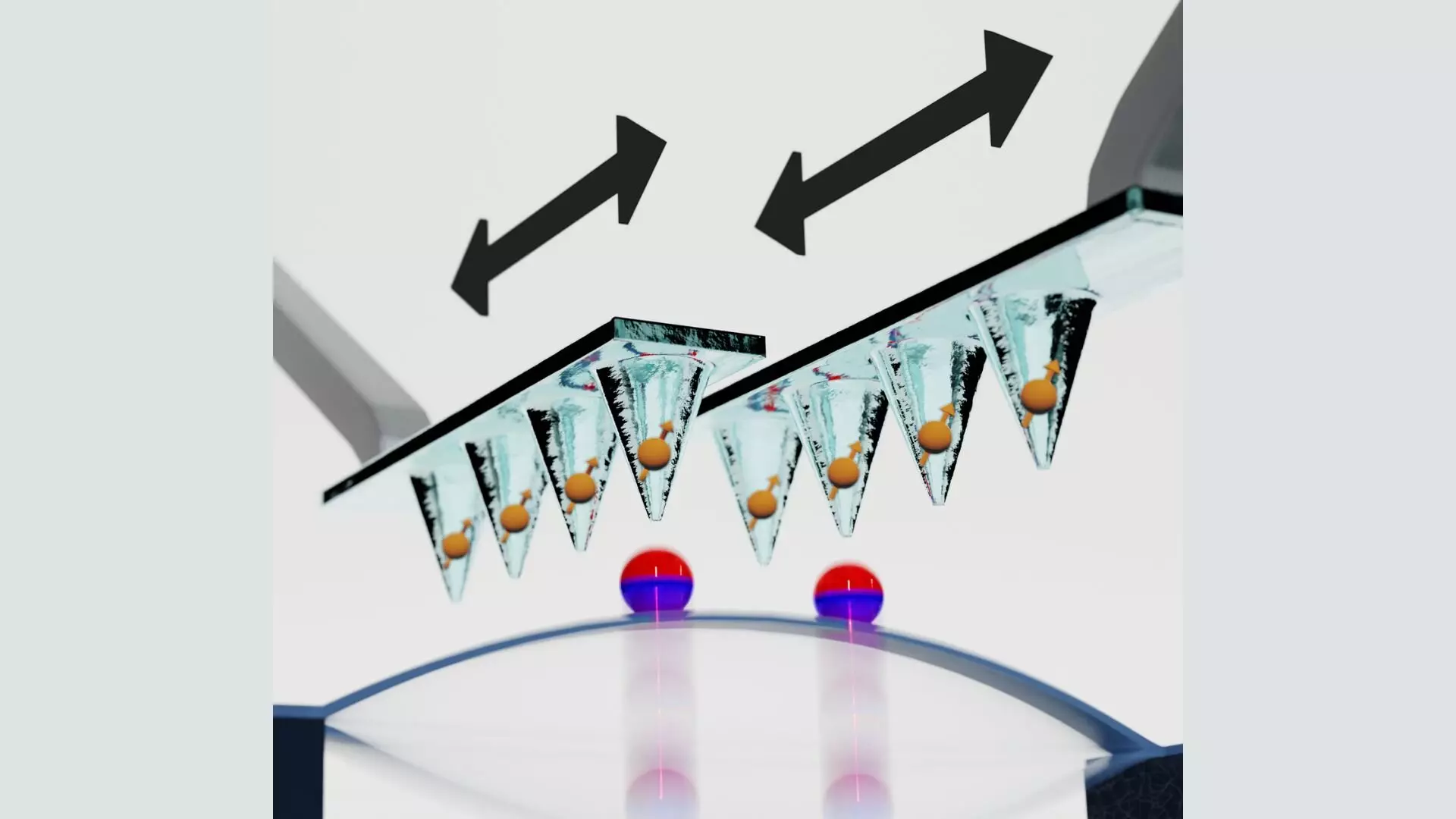The quest for practical quantum computing systems has long been hindered by several critical challenges pertaining to qubit coherence, stability, and scalability. Recent developments led by a team at Harvard University, spearheaded by graduate student Frankie Fung under the mentorship of Professor Mikhail Lukin, highlight a novel approach that might address these hurdles. Their research, published in Physical Review Letters, proposes an innovative coupling of solid-state spin qubits with nanomechanical resonators. This combination holds the potential to propel quantum systems into the realm of practicality, allowing for programmable and scalable architectures.
Solid-state spin qubits are currently favored due to their long coherence times, essential for maintaining the integrity of quantum information. However, problems arise in their scalability. Current methodologies typically involve magnetic dipolar interactions, which have a limited range, making it cumbersome to control large arrays of qubits—a necessity for quantum systems to operate effectively.
The Architecture of Quantum Interaction
Fung’s team presents an architectural strategy that innovatively employs nanomechanical resonators to mediate the interaction between these qubits. At the heart of their work are nitrogen-vacancy (NV) centers within diamond structures, which serve as robust qubits with exceptional stability owing to their low susceptibility to environmental interference.
Using techniques like chemical vapor deposition, the research team has developed a system where nitrogen atoms replace some carbon atoms, leading to the formation of vacancies that enable the creation of NV centers. These centers possess unique optical properties and long coherence times, rendering them attractive candidates for quantum information processing. However, the short-range interactions inherent to their magnetic dipolar nature limit their capabilities, especially in creating entangled states necessary for advancing quantum computing.
The proposed architecture innovates by allowing these spin qubits to interact indirectly via a nanomechanical resonator, significantly extending the interaction range beyond traditional constraints. This method allows for a novel means of creating non-local qubit interactions, a critical aspect for building larger-scale and more complex quantum processors.
Precision and Control: The Mechanics of Interaction
The essence of their approach lies in the use of individual scanning probe tips that house the spin qubits. These probes are maneuvered over a nanomechanical resonator that facilitates spin-spin interactions, creating an avenue for programmable connectivity among qubits. The setup includes diamond nanopillars housing NV centers situated close to micromagnets, which generates the necessary magnetic fields to control electron spin states.
What sets this design apart is the internal structure and functionality of the nanopillars, which not only reduce the power required for laser excitation of the NV centers but improve the overall interaction dynamics of the quantum system. The micromagnet’s magnetic field plays a pivotal role in influencing the qubit’s electron spin state, and through oscillatory interactions, they can indirectly influence neighboring qubits during mechanical resonance.
Fung’s team demonstrated the feasibility of their architecture by showing that coherent information stored in an NV center could be effectively preserved while being moved within a sizable field gradient. The findings, reflecting a high quality factor of approximately one million, indicate that their system can maintain coherent mechanical motion despite its microfabricated complexities.
Future Prospects and Innovations
While the preliminary evidence for coherence preservation in their system is promising, the researchers recognize that the current coupling strength is insufficient for immediate practical applications. Nevertheless, their forward-looking vision includes plans to integrate optical cavities with the nanomechanical resonators to enhance measurement precision and prepare the resonator in its ground state.
These advancements present a dual opportunity: to transfer quantum information variably between spin and mechanical systems, and to leverage nanomechanical resonators for long-range connectivity across different types of qubits. This hybrid quantum system approach aims to mitigate the disadvantages associated with individual qubit types while enhancing the overall capabilities of quantum circuitry.
As they continue refining this innovative architecture, Fung’s research represents a significant stride toward realizing scalable quantum technologies. Addressing the critical scalability issue in quantum computing through such integrative methods showcases the potential for fundamentally transforming the landscape of quantum information processing. The burgeoning field stands on the brink of monumental breakthroughs that could ultimately lead to more complex and capable quantum systems seamlessly interfacing with existing technologies.

